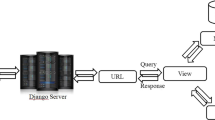Abstract
Antarctic sea ice cover plays an important role in shaping the earth’s climate, primarily by insulating the ocean from the atmosphere and increasing the surface albedo. The convective processes accompanied with the sea ice formation result bottom water formation. The cold and dense bottom water moves towards the equator along the ocean basins and takes part in the global thermohaline circulation. Sea ice edge is a potential indicator of climate change. Additionally, fishing and commercial shipping activities as well as military submarine operations in the polar seas need reliable ice edge information. However, as the sea ice edge is unstable in time, the temporal validity of the estimated ice edge is often shorter than the time required to transfer the information to the operational user. Hence, an accurate sea ice edge prediction as well as determination is crucial for fine-scale geophysical modeling and for near-real-time operations. In this study, active contour modelling (known as Snake model) and non-rigid motion estimation techniques have been used for predicting the sea ice edge (SIE) in the Antarctic. For this purpose the SIE has been detected from sea ice concentration derived using special sensor microwave imager (SSM/I) observations. The 15% sea ice concentration pixels are being taken as the edge pixel between ice and water. The external force, gradient vector flow (GVF), of SIE for total the Antarctic region is parameterised for daily as well as weekly data set. The SIE is predicted at certain points using a statistical technique. These predicted points have been used to constitute a SIE using artificial intelligence technique, the gradient vector flow (GVF). The predicted edge has been validated with that of SSM/I. It is found that all the major curvatures have been captured by the predicated edge and it is in good agreement with that of the SSM/I observation.
Similar content being viewed by others
References
Chenyang, Xu and Prince, J.L. (1997) Gradient Vector Flow: A New External Force for Snakes, Proc. IEEE Conf. on Comp. Vis. Patt. Recog. (CVPR), Los Alamitos: Comp. Soc. Press, pp.66–71, June 1997.
Cohen, L.D. (1991) Note on active contour models and balloons. CVGIP: Image Understanding, v.53, pp.211–218.
Comiso, J.C., Cavalieri, D., Parkinson, C. and Gloersen, P. (1997) Passive microwave algorithms for sea ice concentrations. Remote Sensing of the Environment, v.60, pp.357–384.
Gloerson, P., Campbe, W.J., Cavalier, D.J., Comiso, J.C., Parkinson C.L. and Zwally H.J. (1992) Arctic and Antarctic Sea Ice:178–1987. NASA-SP_511, 290p.
Kass, M., Witkin, A. and Terzopoulos, D. (1987) Snakes: The Active contour models. Internat. Jour. Computer Vision, v.1, pp.321–331.
Lamb, H.H. (1982) The climate environment of the Arctic Ocean. In: L. Ray (Ed.), The Arctic Ocean. John Wiley and Sons, New York, pp.135–161
Vowinckell, E. and Orwing, S. (1970) The climate in the north polar basin, climate of the polar regions. World Survey of Climatology, Elsevier, Amsterdam, v.14, pp.129–252.
Vyas, N.K., Dash, M.K., Bhandari, S.M., Khare, N., Mitra, A. and Pandey, P.C. (2003) On the secular trend in sea ice extent over the Antarctic region based on OCEANSAT — 1 MSMR Observations. Internat. Jour. Remote Sensing, v.24, pp.2277–2287.
Author information
Authors and Affiliations
Corresponding author
Rights and permissions
About this article
Cite this article
Rana, P.K., Dash, M.K., Routray, A. et al. Prediction of sea ice edge in the Antarctic using GVF Snake model. J Geol Soc India 78, 99–108 (2011). https://doi.org/10.1007/s12594-011-0076-6
Published:
Issue Date:
DOI: https://doi.org/10.1007/s12594-011-0076-6




